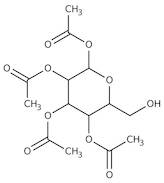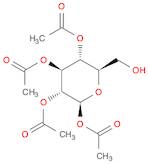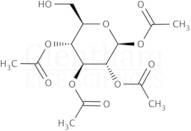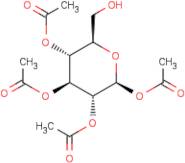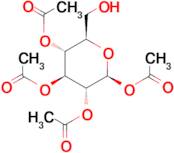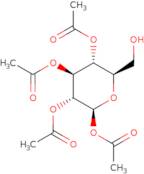CAS 13100-46-4: 1,2,3,4-tetra-O-acetyl-beta-D-glucopyranose
Description:1,2,3,4-Tetra-O-acetyl-beta-D-glucopyranose is a derivative of glucose, specifically an acetylated form of beta-D-glucopyranose. This compound features four acetyl groups attached to the hydroxyl groups of the glucose molecule, which enhances its stability and solubility in organic solvents. It is typically a white to off-white crystalline solid and is soluble in polar organic solvents such as methanol and acetone. The presence of acetyl groups makes it less polar than the parent glucose, affecting its reactivity and interactions in chemical processes. This compound is often used in organic synthesis, particularly in glycosylation reactions, due to its ability to act as a glycosyl donor. Additionally, it serves as an intermediate in the synthesis of various glycosides and oligosaccharides. Its chemical structure allows for specific reactivity patterns, making it valuable in carbohydrate chemistry and related fields. As with many acetylated sugars, it may exhibit different physical and chemical properties compared to its unmodified counterpart.
Formula:C14H20O10
InChI:InChI=1S/C14H20O10/c1-6(16)20-11-10(5-15)24-14(23-9(4)19)13(22-8(3)18)12(11)21-7(2)17/h10-15H,5H2,1-4H3/t10-,11-,12+,13-,14-/m1/s1
InChI key:InChIKey=FEQXFAYSNRWXDW-RKQHYHRCSA-N
SMILES:O=C(OC1OC(CO)C(OC(=O)C)C(OC(=O)C)C1OC(=O)C)C
- Synonyms:
- 1,2,3,4-Tetra-O-acetyl-β-<span class="text-smallcaps">D</span>-glucopyranose
- 1,2,3,4-Tetra-O-acetyl-β-<span class="text-smallcaps">D</span>-glucose
- 1,2,3,4-tetra-O-acetyl-B-D-*glucopyranose
- 1,2,3,4-tetra-O-acetylhexopyranose
- Glucopyranose, 1,2,3,4-tetraacetate, β-<span class="text-smallcaps">D</span>-
- NSC 409250
- β-<span class="text-smallcaps">D</span>-Glucopyranose, 1,2,3,4-tetraacetate
- β-D-Glucopyranose, 1,2,3,4-tetraacetate
- Glucopyranose, 1,2,3,4-tetraacetate, β-D-
- 1,2,3,4-Tetra-O-acetyl-β-D-glucose
- See more synonyms




















